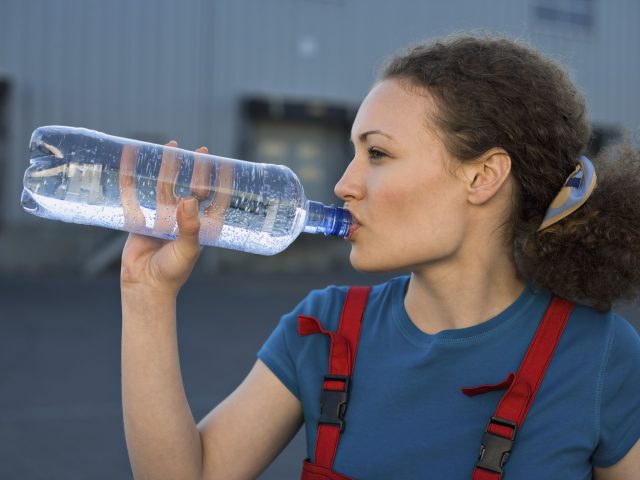By Bob Shepard
UAB News
It gets hot in Alabama in July. And humid. With thousands of visitors from around the world descending on Birmingham for The World Games 2022, the University of Alabama at Birmingham is gearing up to handle heat-related illnesses and dehydration.
UAB Medicine is the official medical provider for the games and is coordinating medical teams at each of the 14 venues where competition will take place. Medical providers say stay hydrated, keep cool and be aware of the signs of heat illness.
Dr. Marie-Carmelle Elie, chair of the Department of Emergency Medicine in the UAB Marnix E. Heersink School of Medicine, says heat illness can be a dangerous, even fatal, condition.
With extreme temperatures, high humidity and a high heat index, body temperature can rise to dangerous levels, Elie said. “Older adults, young children and those with preexisting conditions are at highest risk, but anyone can develop heat-related illnesses under the right conditions.”
The Centers for Disease Control and Prevention lists five types of heat illness:
- Heat stroke: a life-threatening illness in which body temperature may rise above 103 degrees in minutes.
- Heat exhaustion: an illness that can precede heatstroke.
- Heat cramps: muscle pains or spasms that happen during heavy exercise.
- Sunburn: painful, red and warm skin, possible blisters.
- Heat rash: skin irritation from excessive sweating.
“Heat stroke and heat exhaustion are the two most dangerous conditions,” Elie said. “Heat stroke is a medical emergency — call 911 immediately if heat stroke is suspected.”
Signs of heat stroke are:
- High body temperature, above 103 degrees.
- Hot, red, dry skin.
- Rapid and strong pulse.
- Possible unconsciousness.
“Call 911 and move the person to a cooler environment,” Elie said. “Reduce the person’s body temperature with cool cloths or even a bath, but do not give fluids.”
Symptoms of heat exhaustion are:
- Heavy sweating.
- Cold, pale, clammy skin.
- Fast, weak pulse.
- Nausea or vomiting.
- Muscle cramps.
“Move the person to a cooler location and have them lie down, while loosening their clothing,” Elie said. “Apply wet, cool cloths to as much of the body as possible, and have them sip water.”
The CDC offers these tips on how to avoid heat illness:
- Drink two to four cups of water every hour while working or active outside. Do not wait until you are thirsty to drink.
- Avoid alcohol or liquids containing large amounts of sugar.
- Wear and reapply sunscreen as indicated on the package.
- Schedule tasks for earlier or later in the day to avoid midday heat.
- Wear a brimmed hat and loose, lightweight, light-colored clothing.
- Take breaks, preferably in an air-conditioned area.
- Seek medical care immediately if you or someone with you has symptoms of heat-related illness.
“Drink water, take breaks and don’t try to do too much if you are outside in the heat,” Elie said. “And don’t forget to check on elderly friends and neighbors. The heat is difficult for pets, too, so bring your dogs and cats inside during the worst of the day’s heat.”
This story originally appeared on the UAB News website.




